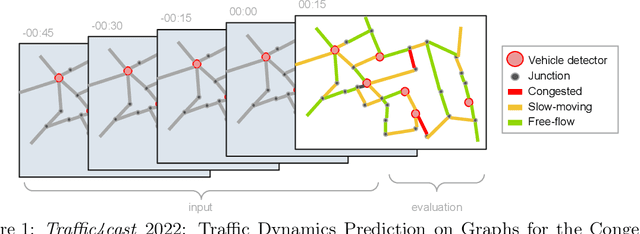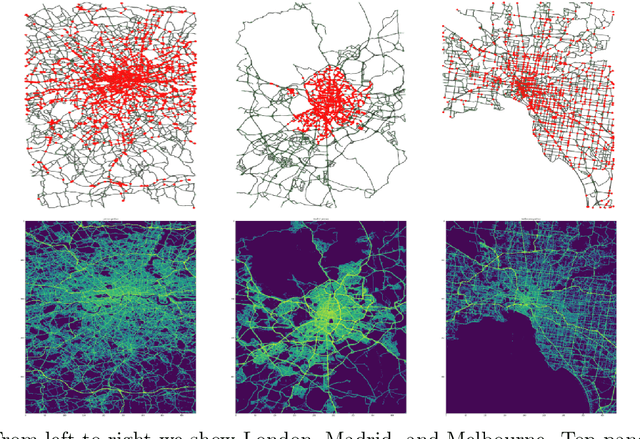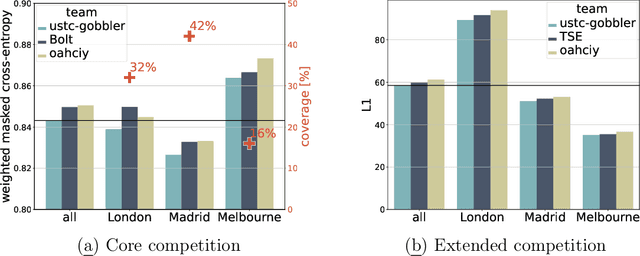Leyan Deng
Traffic4cast at NeurIPS 2022 -- Predict Dynamics along Graph Edges from Sparse Node Data: Whole City Traffic and ETA from Stationary Vehicle Detectors
Mar 14, 2023



Abstract:The global trends of urbanization and increased personal mobility force us to rethink the way we live and use urban space. The Traffic4cast competition series tackles this problem in a data-driven way, advancing the latest methods in machine learning for modeling complex spatial systems over time. In this edition, our dynamic road graph data combine information from road maps, $10^{12}$ probe data points, and stationary vehicle detectors in three cities over the span of two years. While stationary vehicle detectors are the most accurate way to capture traffic volume, they are only available in few locations. Traffic4cast 2022 explores models that have the ability to generalize loosely related temporal vertex data on just a few nodes to predict dynamic future traffic states on the edges of the entire road graph. In the core challenge, participants are invited to predict the likelihoods of three congestion classes derived from the speed levels in the GPS data for the entire road graph in three cities 15 min into the future. We only provide vehicle count data from spatially sparse stationary vehicle detectors in these three cities as model input for this task. The data are aggregated in 15 min time bins for one hour prior to the prediction time. For the extended challenge, participants are tasked to predict the average travel times on super-segments 15 min into the future - super-segments are longer sequences of road segments in the graph. The competition results provide an important advance in the prediction of complex city-wide traffic states just from publicly available sparse vehicle data and without the need for large amounts of real-time floating vehicle data.
Transposed Variational Auto-encoder with Intrinsic Feature Learning for Traffic Forecasting
Nov 14, 2022Abstract:In this technical report, we present our solutions to the Traffic4cast 2022 core challenge and extended challenge. In this competition, the participants are required to predict the traffic states for the future 15-minute based on the vehicle counter data in the previous hour. Compared to other competitions in the same series, this year focuses on the prediction of different data sources and sparse vertex-to-edge generalization. To address these issues, we introduce the Transposed Variational Auto-encoder (TVAE) model to reconstruct the missing data and Graph Attention Networks (GAT) to strengthen the correlations between learned representations. We further apply feature selection to learn traffic patterns from diverse but easily available data. Our solutions have ranked first in both challenges on the final leaderboard. The source code is available at \url{https://github.com/Daftstone/Traffic4cast}
 Add to Chrome
Add to Chrome Add to Firefox
Add to Firefox Add to Edge
Add to Edge